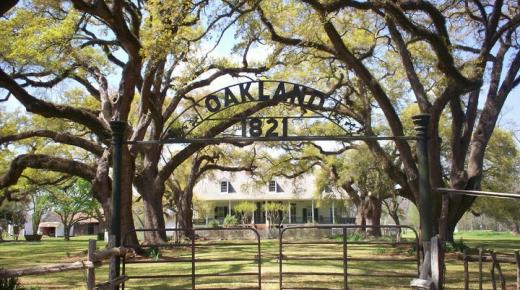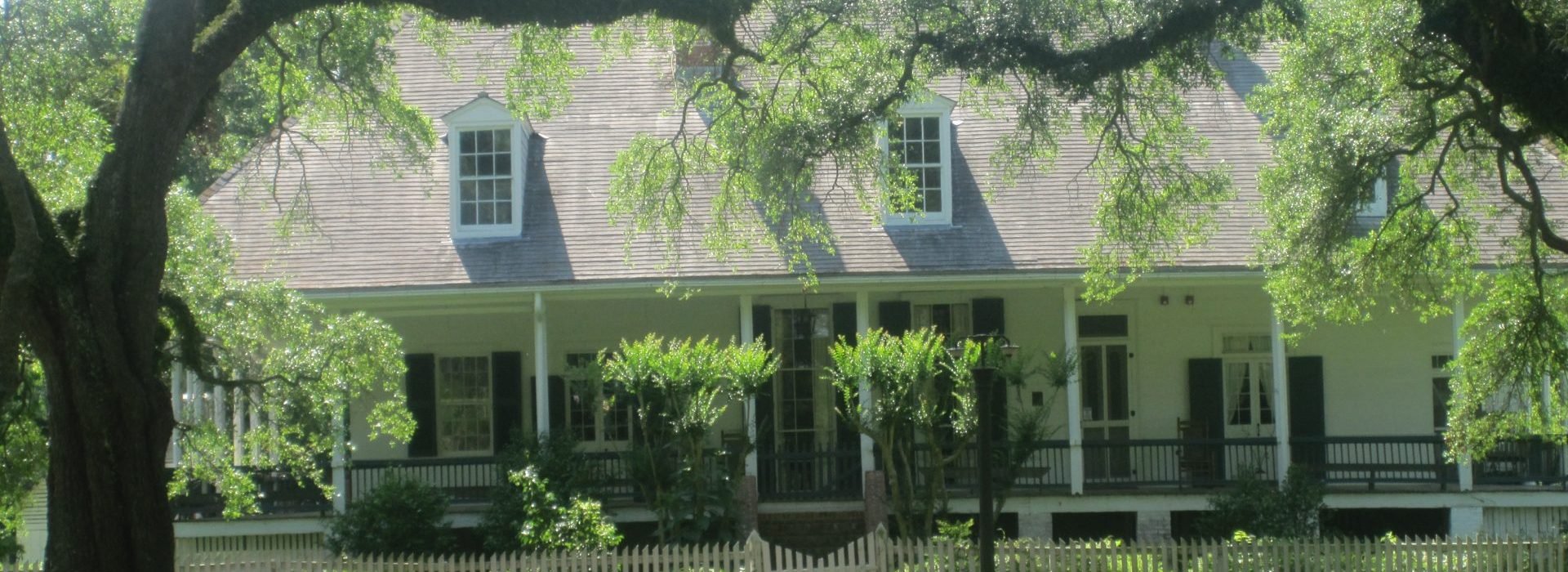Located at 4386 Highway 494 in Bermuda, Louisiana, the Oakland Plantation, Creole National Historical Park is only one of two National Bicentennial Farms located west of the Mississippi River. It and the Magnolia Plantation, both of the Natchitoches Parish, had been in the same family for more than two-hundred years. Founded by Jean Pierre Emanuel Prud’homme, eight generations, according to the plantation’s page on the National Park Service (NPS) website, “of his French Creole family lived and worked on this land, managing to keep the physical complex intact for two centuries.”
This site is one of America’s greatest examples of a French Creole plantation complex whose creation and success was based upon cotton production. Because of its authenticity, legacy and significance, this land tract ranked on the National Register of Historic Places in 1979 and was designated a National Historic Landmark in 2001. Coming under the auspices of the National Park Service in 1998, the Oakland Plantation Creole National Historical Park is also a unit of the Cane River Creole National Historical Park.
The Oakland Plantation is affiliated with the Atahoe Plantation, which was developed by Jean Pierre Emanuel’s grandson, Pierre Emanuel, the Magnolia Plantation and the Melrose Planation. It is also a destination of the Louisiana leg on the African American Heritage Trail.
The origin of the Oakland Plantation begins with Jean Pierre Emanuel Prud’homme. Initially working the land as a farm in 1785, he received a land grant in 1789 from Spain, who controlled Louisiana at the time. At first, indigo and tobacco were grown on the land. However, Jean Pierre Emanuel soon changed his focus. Electing cotton to become their primary cash crop, he and his wife, Marie Catherine (née Lambre) became one of the first families in the region to enjoy the immense and enduring wealth its sales brought. This wealth of the Prud’homme family and others in the South was made possible due to the intense demand for cotton by textile mills in the North and expertise and enslavement of Blacks.
For certain, the cotton was planted, cultivated and harvested by enslaved persons of African descent. They were bought with the purpose to be in perpetual bondage, where they would spend their entire lives laboring in the fields as well as in the buildings they were forced to erect on the plantation.
In addition to cotton, fruits and vegetables were also grown. The Prud’homme family also raised horses and mules as work animals and chickens, turkeys and pigeons to eat. As the Oakland Plantation grew to become its own self-supporting enterprise, it had to be further developed in order to meet its expansive needs. As such, the structures built include the Prud’homme home, which began being constructed in 1818 and was completed in 1821. Other buildings include sites for work such as the blacksmith’s shop, the carpenter shop, smokehouse and the wash house; barns, sheds and coops and pigeonnières (where pigeons, a delicacy, are raised); a carriage house; a house for the overseer; and cabins for those enslaved.
The brilliance, expertise and endurance of Blacks on the plantation was described on the NPS website. In its discussion of the history of the plantation, it promotes, “The skills and strengths of enslaved African-Americans are evident in the buildings they constructed at Oakland Plantation. The proficiency of enslaved blacksmiths such as Solomon Williams, for example, can be seen in iron latches and hinges, in numerous grave crosses from the slave cemetery, and in a collection of skillfully made well-drilling tools found on Oakland Plantation”.
By the late 1820s, Emanuel and Marie’s son, Pierre Phanor, was given control of the Oakland Plantation by his parents. Upon Emanuel’s death, Pierre Phanor inherited the land complex and all attached to it. Pierre Phanor was able to continue being successful until the Civil War erupted. Much of the Cane River region, including buildings, crops, land and livestock, was devastated by the armies of both the Confederacy and the Union. There are several accounts, according to Prud’homme family lore, on the fate of Pierre Phanor. While his fate is uncertain, it is clear that his two sons inherited Oakland Plantation. Jacques Alphonse retained the land that contained the Prud’homme home and surrounding lands west of the Cane River. His brother, Pierre Emanuel, took the land east of the Cane River and developed his own plantation, Atahoe.

(No copyright infringement intended).
Quickly adapting to the changing times of Reconstruction, Alphonse hired Black freedmen and Creoles of color to work, respectively, as sharecroppers and tenant farmers. Also onsite was a general store that also carried supplies and offered services needed by the sharecroppers and tenant farmers. The descendants of many of these Blacks and Creoles of color would remain in the Oakland plantation area. Because of this, according to the National Park Service site, “The vibrant African-American communities in the Natchitoches region today trace two hundred years of cultural history to this fertile land surrounding the Cane River.”
Included on Alphonse’s land was the U.S. Post Office for Bermuda; it was owned and managed by the Prud’homme family. This store was in operation until 1983, its closing spurred by the decline of farmers in the region.
The Oakland Plantation, Creole National Historical Park has free admission and is open daily, from 9 a.m. to 3:30 p.m. This family-friendly site is ADA compliant and parking is available onsite.
Presently, there are nearly sixty intact buildings that remain on the Oakland Plantation; seventeen of these are original outbuildings. Specific structures, such as the general store, the cook’s cabin, an overseer’s cabin and two pigeonnières, are open for self-guided tours. Because it is a site of the National Park Service, Rangers are also available for guided tours and talks. Guided house tours occur at 10:30 a.m. and at 1:30 p.m. and Cabin talk takes place at 1:00 p.m.
